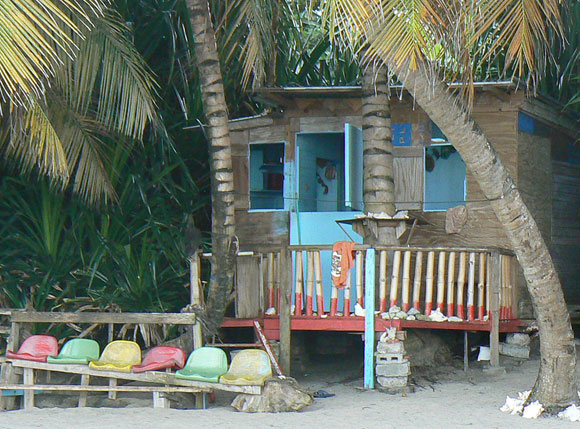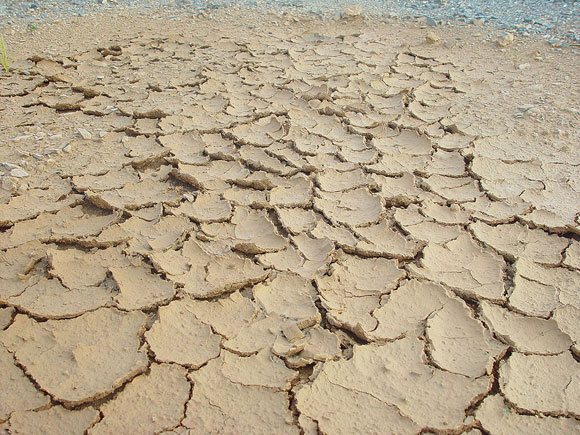
I took this picture while hiking in the north of Grenada recently. I love it for many reasons, most of them are obvious. However, and you will probably laugh at this, I also thought it would be a great visual for describing the adaptation challenges in small islands like those in the Caribbean and thinking about how to tackle them.
The scene looks relaxed – however for the Caribbean United Nations Framework Convention on Climate Change (UNFCCC) negotiators the watchword is urgency. We are three weeks away from COP 16 at Cancun and the small islands have been asserting that we are now in a phase of increased urgency. I remember Dessima Williams, Grenada’s climate change ambassador, saying there is not a straight line between the evidence and the outcome of the negotiations. The issues are complex and involve over a hundred nations agreeing on how to reduce emissions, manage damage and have a vision for the future.
No small task, but I know the region is keen for common ground to be reached on fast tracking particular issues at the conference in Mexico. We are looking for agreed progress on:
- adaptation funding and mechanisms
- climate technology transfer for mitigation and adaptation
- protection of standing forests
- and reducing emissions from deforestation and forest degradation in developing countries (REDD)
For more information see a recent interview with Ambassador Williams; the Liliendaal declaration on climate change and development for the Caribbean states position; or the Ambo declaration adopted last week by several Pacific small islands.
Coastal communities are among those prioritised here in the Caribbean due to their deteriorating conditions from rising sea levels and temperatures. This has caused erosion of beaches, increased risk from storm surges, loss of land and displacement of people. Decline of the coastal ecosystems and coral bleaching would negatively impact reef fish and threaten reef fisheries but also their families. Like those that live in the house in the picture, who rely on fishing or the value of their location for tourism to earn a living.
 The bench in the picture is the eye catcher of course. Each chair being at a different height and colour reminds me that we need to have room for diversity in adaptation and provide flexibility to do things that are appropriate for our circumstances. Adaptation will be ongoing and evolve in unexpected ways. We should maximise opportunities when circumstances are good as well as increase the ability of people to cope when conditions are bad. Ensuring that we have systems and processes for the long term, using all our knowledge sources is just as important as the implementation of an adaptation project itself.
The bench in the picture is the eye catcher of course. Each chair being at a different height and colour reminds me that we need to have room for diversity in adaptation and provide flexibility to do things that are appropriate for our circumstances. Adaptation will be ongoing and evolve in unexpected ways. We should maximise opportunities when circumstances are good as well as increase the ability of people to cope when conditions are bad. Ensuring that we have systems and processes for the long term, using all our knowledge sources is just as important as the implementation of an adaptation project itself.
The lowest chair in the picture represents the current threat or level of response for me. Our efforts must move to a higher chair, incrementally - not only to meet the degree of change that will occur from longer term climate threats but also for shorter term threats. For example, the increased likelihood of weather varying from very wet to very dry or extended dry spells within the rainy season. Our existing disaster risk reduction activities, while providing a good base, need to be 'ramped' up.

Adaptation capacity is the ability of a system to adjust to climate change. Adaptation systems usually involve assessing the vulnerability, coordinating different factors and managing climate relevant information. In DFID we aim for low carbon climate resilience - a win-win combination of ensuring the poorest, or those who are most vulnerable, are better able to cope with climate change. For example, taking advantage of the benefits that say, a decentralised renewable energy system can provide, for new or reliable electricity supplies. Where these linkages and benefits occur I feel we must fully take advantage of them - a bench to meet multiple needs.
Ultimately the degree to which mitigation or reduction of greenhouse gases is successful will influence the degree of adaptation required. However some climate change is already inevitable and we have our work cut out for us to boost our coping limits.

Recent Comments